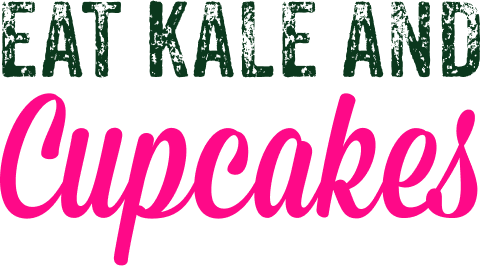Transitioning Along an Eating Spectrum
From Meal Exchanges to Intuitive Eating
By: Reva Schlanger MS, RD, CDN and Laura Cipullo, RD, CDCES, CEDRD-S, RYT
Intuitive eating versus meal exchanges
Intuitive eating has been getting a lot of buzz lately as the gold standard way to trust our bodies and have our bodies trust us. With that being said, intuitive eating is harder than it seems considering we live in a society plagued by diet culture, more screen time then down time and ever-increasing levels of personal anxiety. For those who suffer from an eating disorder, usually the term intuitive eating is not even discussed until much later in treatment. This is because clients must be properly nourished and working through challenging the disordered thoughts before learning how to trust their body and for their body to trust it will be fed appropriately and adequately. The traditional weight restoration/stabilization and or ED behavior reducing meal plan in eating disorder treatment has been the exchange system.
With exchanges, each food group is broken down into units or portion sizes that are similar in nutrition value. Exchanges were initially developed by the American Dietetic Association along with the American Diabetes Association in the 1950s as a tool for helping people with diabetes manage blood sugar by eating consistent amounts of carbohydrate from meal to meal. These exchanges were adapted for use in eating disorder treatment, where they are used as a tool to provide structure and adequacy to eating. While the goal is to gradually move away from exchanges on whatever timeline is appropriate for the individual client, it can serve an initial purpose. Exchanges can be a great tool to allow for learning how to balance meals and snacks while eating an optimal amount. However, meal exchanges are used temporarily as phase one in learning how to eat and nourish.
Typically, the goal in eating disorder recovery and is to have clients transition from the rigidity of an exchange-based meal plan to a more flexible meal structure ultimately leading toward mindful and intuitive eating. For many clients, this can feel overwhelming and confusing, which is why seeking the guidance of a registered dietitian who specializes in working with eating disorders is crucial. This usually happens by gradually transitioning from dietary exchanges to a meal structure of 3 meals and 3 snacks daily (of course this is a generalization, and every client has a different meal structure based on their current metabolic needs determined by their registered dietitian). Each meal ideally contains the 3 macronutrients (carbohydrate, protein, and fat) with more emphasis on using a hand/fist portion guide vs an exact serving size. Snacks will likely include at least 2 of the 3 macronutrients and will look different for each person.
The role of hunger in intuitive eating
In conjunction with a meal structure, LCWNS RD’s teach clients the 4 different types of hunger (physical, emotional, behavioral, and hedonic) and how to gage which hunger(s) one may be identifying with at a certain time of the day. This provides clients more insight physically and mentally. Tuning in can be overwhelming for some, but by using grounding techniques such as progressive relaxation or a mindful meditation before eating, clients may find a sense of calm to gain a greater understanding and a new trust with their bodies ultimately leading to more a more positive association with food and eating. This shift to a more mindful eating approach can be quite liberating often increasing the quality of one’s life.
Specifically, mindful eating is an approach to feeding oneself that focuses on an individual’s sensory awareness of the food and their eating experience. It has less to do with calories, carbohydrates, fat, or protein and more to do with awareness. The intention is to help individuals be present using their breath, identify the five senses (touch, sound, sight, smell and finally taste) and to eat slowly. Instead of determining a portion of food before eating, you tune into the body for cues to help determine the portion while you are eating. The work continues after the meal in reflection, to identify how that specific meal and its’ composition served you. For clients to arrive at this stage, usually weight restoration and or eating a consistent balanced nutrition intake throughout the day has been already achieved.
Is intuitive eating the same as mindful eating?
This leads us to the end goal of intuitive eating. While it is possible to engage in mindful eating without becoming an intuitive eater, it is difficult to achieve intuitive eating without some mindfulness. Some of the intuitive eating principles like “Honor Your Hunger”, “Feel Your Fullness” and “Discovery the Satisfaction Factor” are all about being present and attuning to our inner cues with curiosity instead of judgement. Therefore, practicing mindful eating is such a crucial step prior to practicing intuitive eating. Intuitive eating acts as a broader framework (compared to mindful eating) that goes outside the eating experience and encourages people to actively reject external diet messaging and change their relationship with food and body. Created by dietitians Evelyn Tribole and Elyse Resch, Intuitive Eating is a set of 10 principles to guide us towards rejecting diet culture and learning to trust our internal cues. It can be helpful to work on each set of principles individually with your dietitian when beginning the intuitive eating journey.
It is important to note that while the goal in eating disorder recovery is often to return to intuitive eating likely first experienced in infancy and childhood, it is not the first step for many or even the final step. For those whose sense of hunger and fullness have been altered due to disordered eating, and or metabolic differences, a meal structure combined with mindful eating may be the best eating approach. While others, who are working towards weight restoration, may find structured meal plans with mechanical eating will be the most practical effort to help restore hunger cues and metabolic functions. At the end of day whether you are learning how to eat, overcoming disordered eating, or recovering from an eating disorder, recognize there is a spectrum of eating approaches you will ossilate between depending on medical conditions and lifestyle. You can find this flow by first working with a registered dietitian who specializes in eating disorders (CEDRD) and then eventually a Certified Intuitive Eating coach or registered dietitian. At Laura Cipullo Whole Nutrition Services, we strive to support clients on this journey by creating an individualized and intentional plan that recognizes where on the eating spectrum the client needs to be and how to flow seamlessly from one approach to the next.







